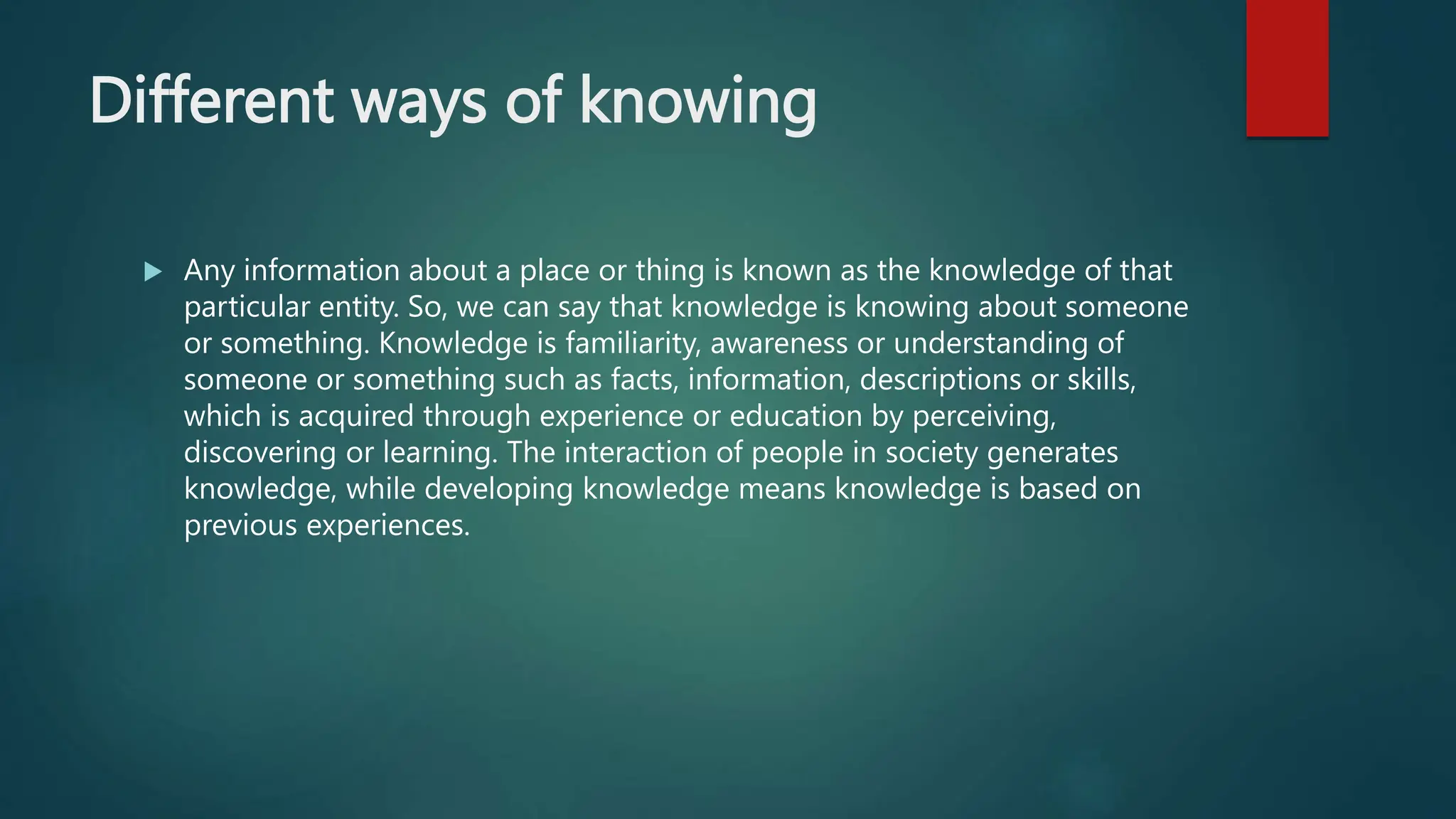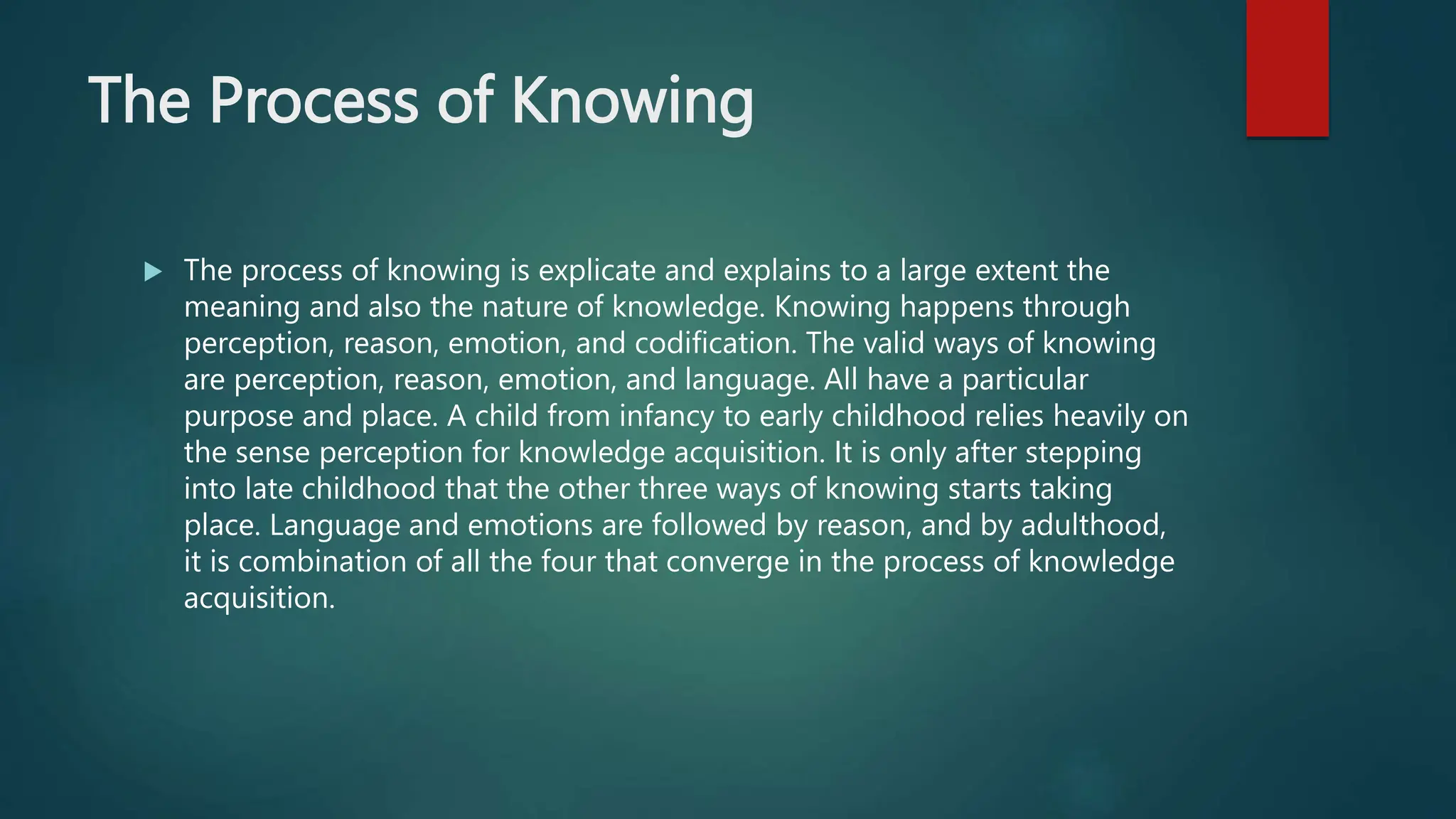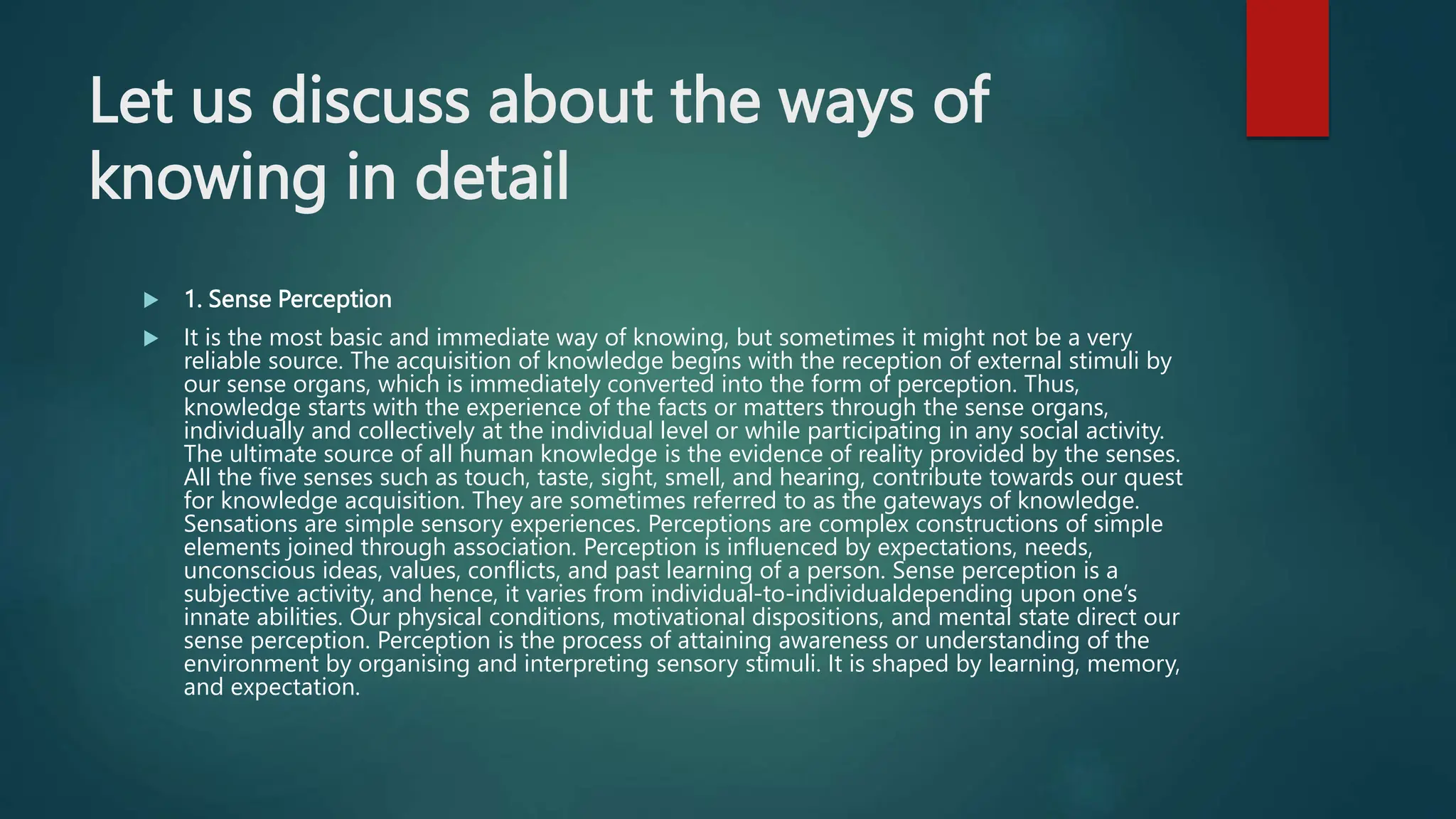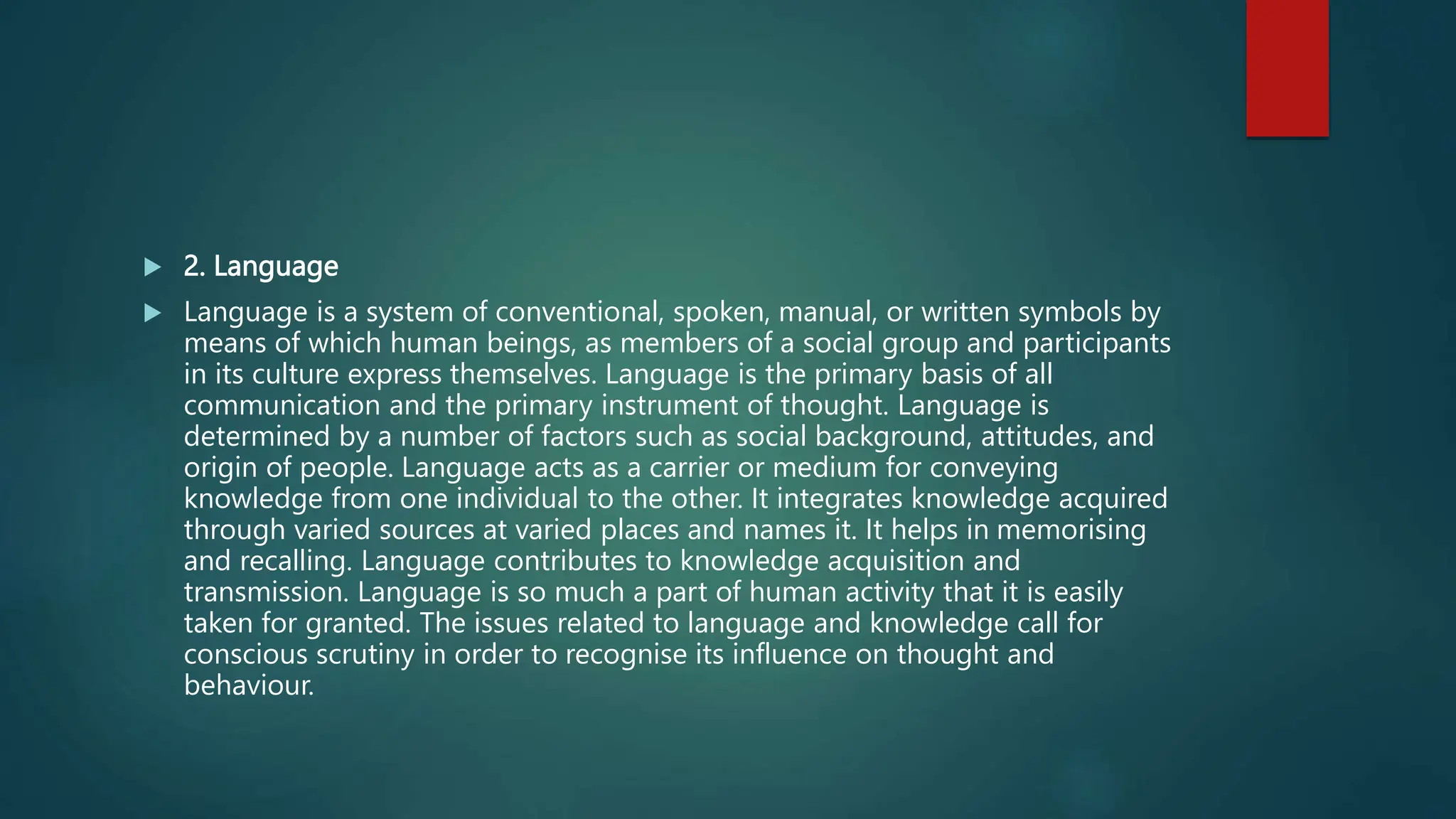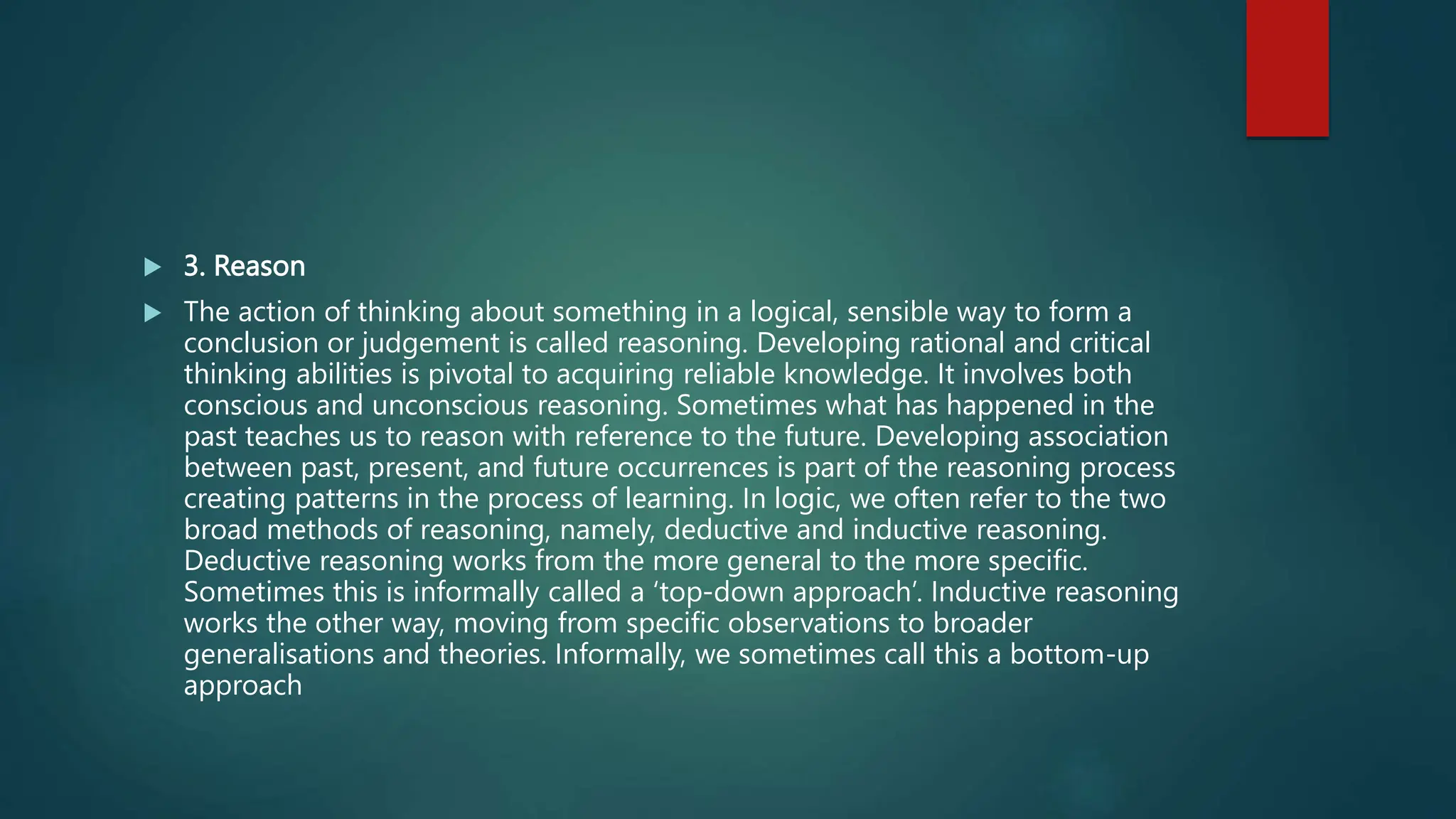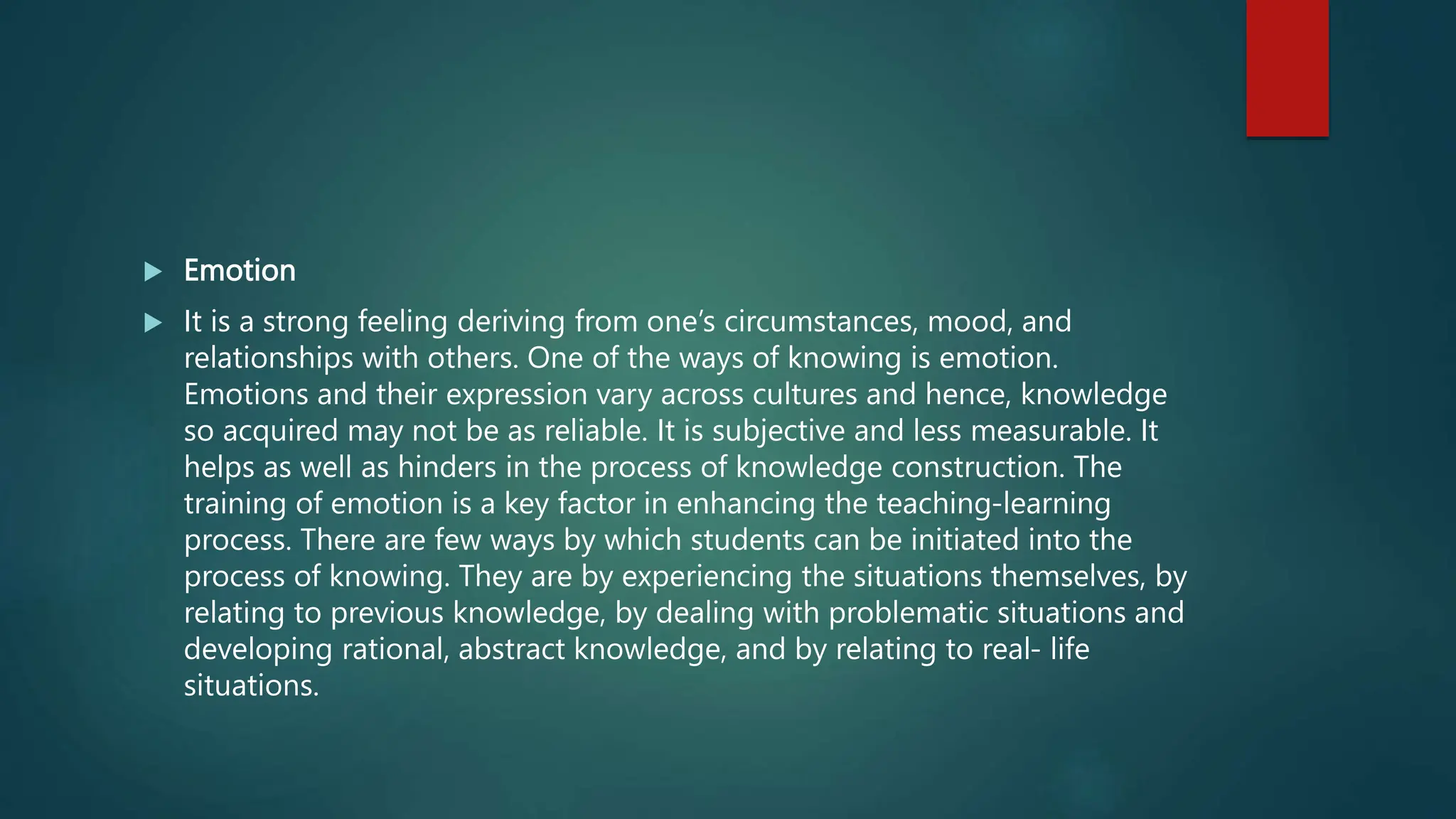The document discusses the different ways of knowing, emphasizing that knowledge involves understanding about entities through experience and education. Key methods of knowing include sense perception, language, reason, and emotion, each playing a significant role in knowledge acquisition at various life stages. The document also highlights the subjective nature of these ways of knowing and their influence on human interaction and learning.

